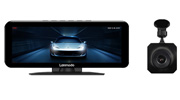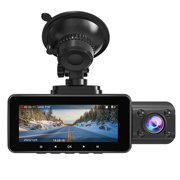Sitting behind the wheel and steering an expensive car with the most advance features does not ensure your safety on the busy road, until and unless you are extra cautious towards the path you are moving on. When you are on the densely packed road, be on the watch out in order to minimize the risks of getting involved in road crashes. Listed below are certain safe driving tips that will protect you and others around you on the road:
1. USE DRIVER ASSISTANT SYSTEM
A night vision system perched right on your dashboard can improve your overall vision. An external NVS such as the advance Lanmodo Vast Pro night vision system provides you with a high-quality image from quite a distance and warns you regarding any hindrances that may come across your way. Pedestrians, animals and other vehicles are prominently visible on the LCD screen enabling you to have a better idea about your path. It further helps you to stay on the lookout during fluctuating weather and even during the dark night.

2. KEEP ROUTINE CHECKS
Before hitting the road make sure that your car is clean as well as fully functional. A thorough inspection of headlights, brakes, fluid levels, tire pressure and indicators is mandatory to ensure your safety on the road. Apart from that clean windshield and rearview mirrors will improve your road visibility.
3. STAY ALERT TO THE ROAD SITUATION
Road situations are always uncertain. You may be a safe driver but another driver around you can be aggressive and negligent. So, it is advisable to stay alert and pay attention to others sharing the road with you. Give space to a fast-moving car, look through your rearview mirrors to observe vehicles behind you and use indicators to warn others. Moreover, follow all the road signs and traffic signals.
4. MAINTAIN A SAFE DISTANCE
Keeping a safe distance from the vehicles ahead of you will allow you to react instantly in case there is a chance of collision. Maintain a risk-free gap between your car and the one in the front that way, you will have an ample amount of time to evaluate any danger and take action according to the situation before you.

5. MATCH YOUR SPEED TO YOUR CONDITIONS
According to an estimate over one-third of fatal traffic accidents occur because of drivers running at a high speed as it reduces your reaction time. Access the road conditions before you and corresponds your speed according to it. If you encounter bad weather on your way, minimise your speed to ensure your safety and the safety of others.
6. NEVER DRIVE WHEN YOU'RE OVERTIRED
Driving with an exhausted mind is the first sign of threat. Never ever drive when both your body and mind are in a state of weariness. Taking your eyes off the road for even the fraction of the second can lead to unwanted troubles. In this condition, it's best to park your vehicle on the side road and take a quick nap.
7. BE MORE CAREFUL IN SUBURB AREAS
For driving in suburb areas you must have a focused mind. Obey the speed limit and parking laws of these areas. Lookout for school buses and never attempt to cross them in a hurry. Be aware of school zones and crosswalks in a suburb area and show patience towards the people on these crosswalks.
8. WATCH OUT FOR ONCOMING CAR LIGHTS
An oncoming car with its high beam can cause glare that can be a serious hazard during night driving as it can cause temporary blindness. So, to cope with this problem try to avert your eyes from the upcoming vehicle and look to the right side of the road. Fix your eyes on the right lane and allow the vehicle to pass.

9. KEEP AN EYE ON THE WEATHER
Well, you cannot predict the exact weather conditions. Once you are on the road adjusts your driving according to the varying climate. Visibility is greatly affected by bad weather conditions. Drive extremely slow during rainy, snowy and foggy situations and avoid making sudden moves. The roads are slippery during rough weather so be extra careful while making turns or changing lanes.
10. ALWAYS PREPARE FOR EMERGENCY EVENT
Emergencies can arise at any moment. You should better be prepared for it. Carry emergency equipment with you in the back of your car trunk. Make sure that you have a spare tire, first-aid kit, a jack, extra fuel and a mini toolbox in the trunk that way you will be able to tackle any unpleasant problem that might come across your way.
11. CONTROL YOUR EMOTIONS
Emotions such as stress, anger, anxiety, excitement and sadness can have a direct impact on your judgement while driving. When sitting behind the wheel you must put all your emotions at the back of your mind and focus all your attention on the road in front of you.



